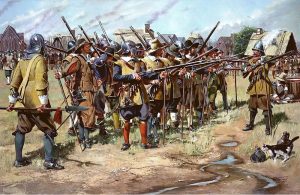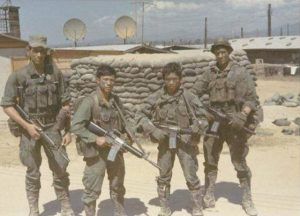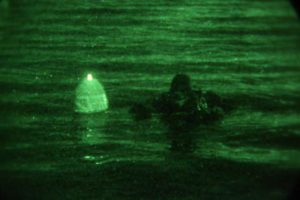
German Innovation, 4.0
In our first installment of this series, we talked about the FN FAL, as one of the “other” assault rifles of the world, post-World War 2. Today, we will talk about the next one in line. (Also, there will be a Part 3 to this story, coming later.)
In the aftermath of World War 2, Germany was a shambles: it had been heavily bombed, many millions of its civilians, as well as the bulk of its professional armed forces, had been killed or displaced, and the country itself had been occupied and partitioned off between the victorious Allied powers, and its industry was severely restricted in what it was allowed to manufacture. (We are not here to discuss the morality of those actions; that is another conversation, entirely.) For Germany’s many weaponsmiths, they had to either find something else to make, or they had to leave the country for other nations, nations in need of innovative weapons designers.

The world of 1946 was not “standardized“, as we would think of the term, now. There were few industries that even attempted to design to internationally accepted standards. As of 1946, a quick (and thoroughly unscientific) glance shows that there were some ten or eleven different rifle calibers in “widespread” use in the world, minimum, depending upon how one describes “widespread” and “rifle caliber“.
Spain – still recovering from a brutal civil war in the mid-1930’s, as well as a grain blight and a recovering agriculture industry that caused severe food shortages during WW2 – had largely sat out the war, but had had paid careful attention to its course and the technological developments emerging from it. After the war was over, Spain decided that it needed to catch up to the other major powers, beginning by revamping its pre-war small arms inventory.
Not finding much in the way of innovation inside the Spanish arms industry, the government design bureau CETME (“Centro de Estudios Técnicos de Materiales Especiales”, or “Center for Technical Studies of Special Materials”) hired former Krupp and Mauser arms designer Ludwig Vorgrimler in 1950. Vorgrimler had patented an innovative “roller-delayed blowback” design during WW2, but little real work had been done with it at the time. Vorgrimler, tired of working for the French [https://en.wikipedia.org/wiki/France], found the Spanish authorities more than welcoming.

He perfected his new design for Spain, which ultimately adopted it as the “Fusil de Asalto CETME Modelo 1958 de 7.62mm” in 1957. This would form the foundation of what became the G3 Rifle. Eventually, as the G3, Vorgrimler’s design would be licensed to Heckler & Koch and Rheinmetall for production in the new West German state.

The design is rugged, robust, reliable and adaptable. As well, it is a relatively simple system to manufacture, making great use of stamped-steel construction, rivaling (almost) even the AK-47 in its simplicity. It is also highly modular, able to swap major components between various models, in a manner only approached (but not equaled) by the AR-15/M-16/M4 series.

The G3 rifle and its many legendary derivatives – the H&K MP-5, HK21, HK33, SG-1, and PSG-1 – would go on to be adopted by over 40 nations and anyone else who could lay hands on them, and with manufacturing licenses being sold to some 18 countries, there were – and are – plenty to go around.

The G3 and it’s descendants have fought – and continue to fight – in virtually every theater of conflict in the world, today. Whatever conflict zone you might find yourself in, you will likely find G3’s in abundance; knowing how they – and other major small arms – operate is in your own best interest.







